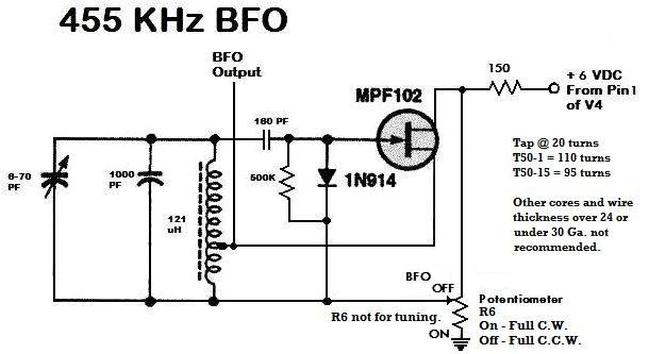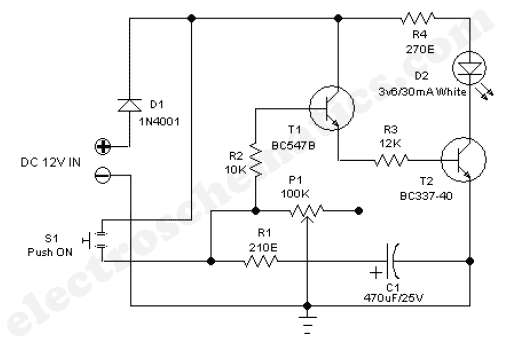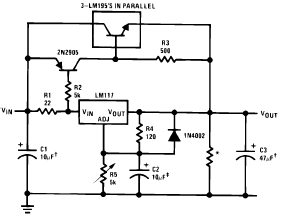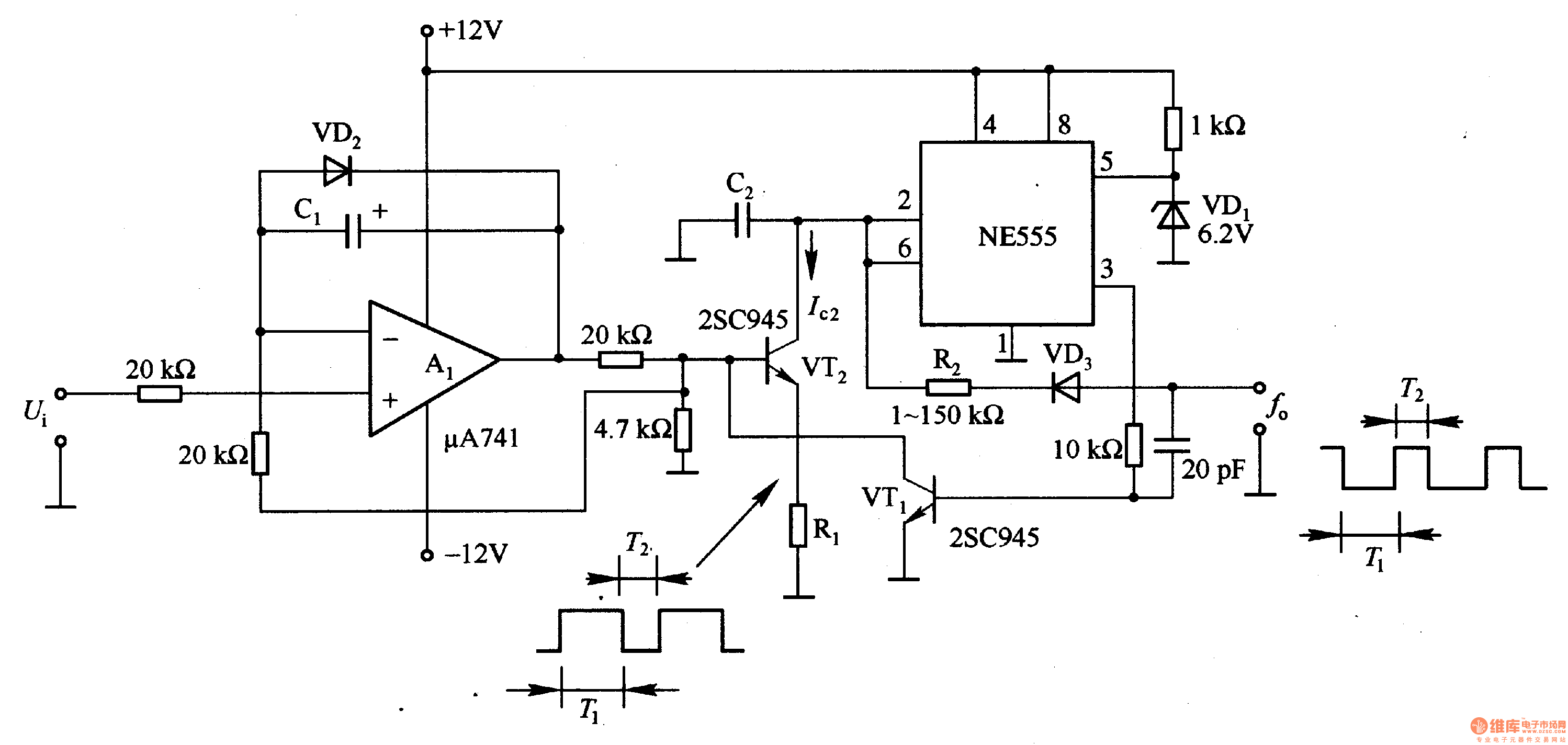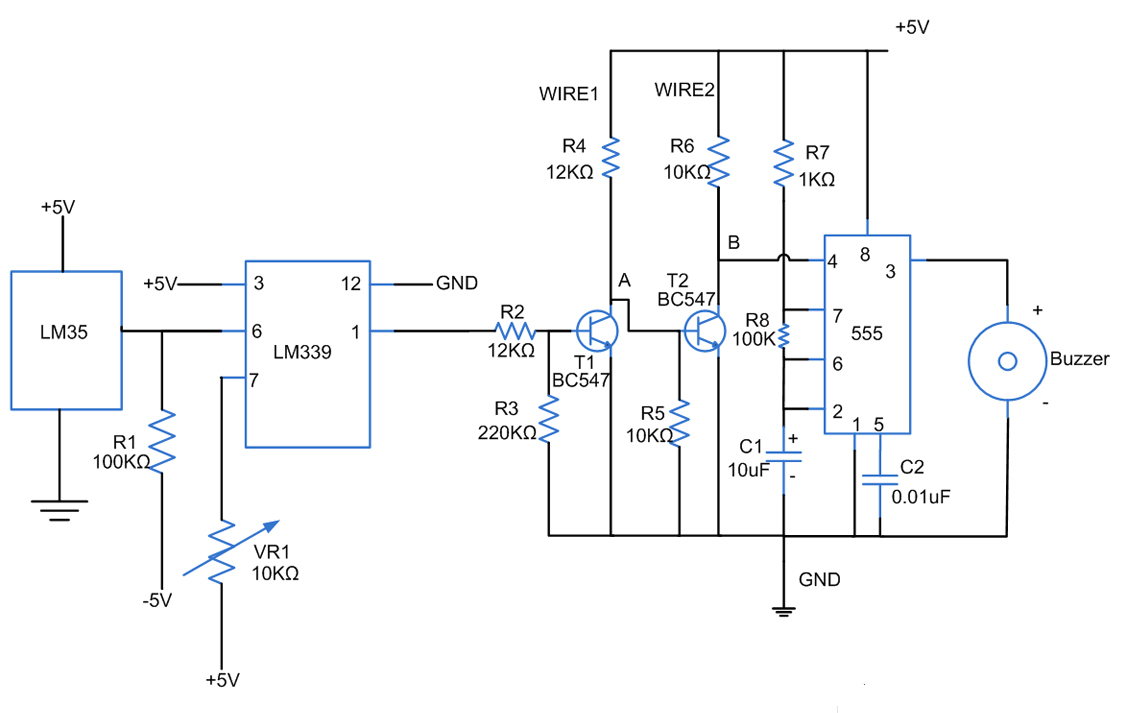
Capacitive load drive circuit diagram of the MAX4450 4451
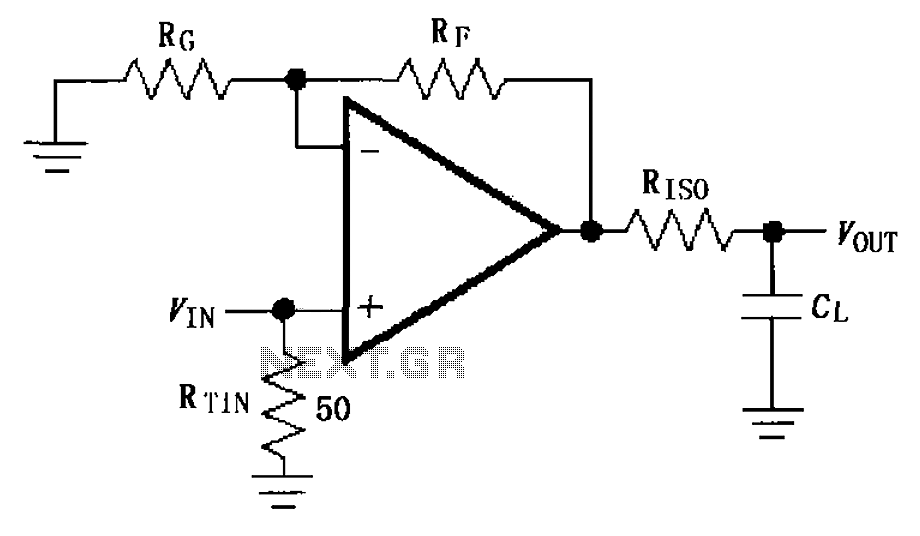
The circuit depicted in FIG demonstrates the MAX4450/4451 utilizing a capacitive load drive circuit with an isolation resistor (RISO). This configuration is situated between the output terminals and the load, along with an additional resistor, to mitigate overshoot and ringing oscillations. The resistance of RISO is specified to be between 20 and 30 ohms.
The MAX4450 and MAX4451 are high-speed operational amplifiers designed for applications requiring precise signal integrity and fast response times. In this context, the use of a capacitive load drive circuit is essential for ensuring stable operation when driving capacitive loads, which can introduce unwanted feedback and oscillations.
The isolation resistor (RISO) plays a critical role in this configuration by providing a damping effect. By placing RISO in series with the output, it helps to reduce the amplitude of any overshoot that may occur when the output transitions rapidly. This is particularly important in high-frequency applications where the risk of ringing oscillations can lead to signal distortion and potential damage to the output stage of the amplifier.
The specified resistance range of 20 to 30 ohms is optimal for balancing the trade-off between signal integrity and stability. A lower resistance may not sufficiently dampen the oscillations, while a higher resistance could degrade the signal quality and increase the output voltage drop. Therefore, careful selection of RISO is essential to maintain the performance characteristics of the MAX4450/4451 in applications where capacitive loads are present.
In summary, the integration of an isolation resistor in the capacitive load drive circuit for the MAX4450/4451 enhances the stability and reliability of the amplifier's performance by effectively managing overshoot and ringing, ensuring high fidelity in signal transmission. As shown in FIG grounds MAX4450/4451 using a capacitive load drive circuit isolation resistor RISO constructed. The circuit between the output terminals and the load plus a res istor RISO, for suppressing overshoot and ringing oscillation, RISO resistance is 20 ~ 30 .
The MAX4450 and MAX4451 are high-speed operational amplifiers designed for applications requiring precise signal integrity and fast response times. In this context, the use of a capacitive load drive circuit is essential for ensuring stable operation when driving capacitive loads, which can introduce unwanted feedback and oscillations.
The isolation resistor (RISO) plays a critical role in this configuration by providing a damping effect. By placing RISO in series with the output, it helps to reduce the amplitude of any overshoot that may occur when the output transitions rapidly. This is particularly important in high-frequency applications where the risk of ringing oscillations can lead to signal distortion and potential damage to the output stage of the amplifier.
The specified resistance range of 20 to 30 ohms is optimal for balancing the trade-off between signal integrity and stability. A lower resistance may not sufficiently dampen the oscillations, while a higher resistance could degrade the signal quality and increase the output voltage drop. Therefore, careful selection of RISO is essential to maintain the performance characteristics of the MAX4450/4451 in applications where capacitive loads are present.
In summary, the integration of an isolation resistor in the capacitive load drive circuit for the MAX4450/4451 enhances the stability and reliability of the amplifier's performance by effectively managing overshoot and ringing, ensuring high fidelity in signal transmission. As shown in FIG grounds MAX4450/4451 using a capacitive load drive circuit isolation resistor RISO constructed. The circuit between the output terminals and the load plus a res istor RISO, for suppressing overshoot and ringing oscillation, RISO resistance is 20 ~ 30 .
